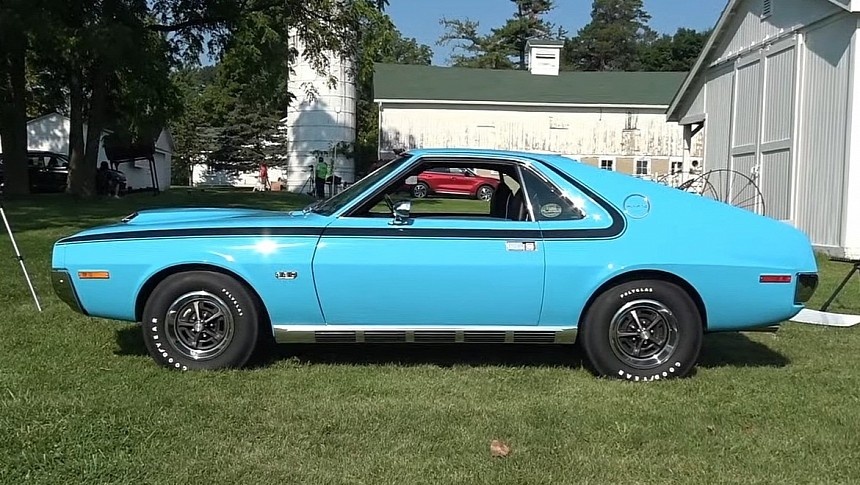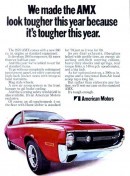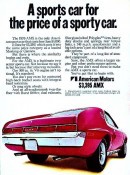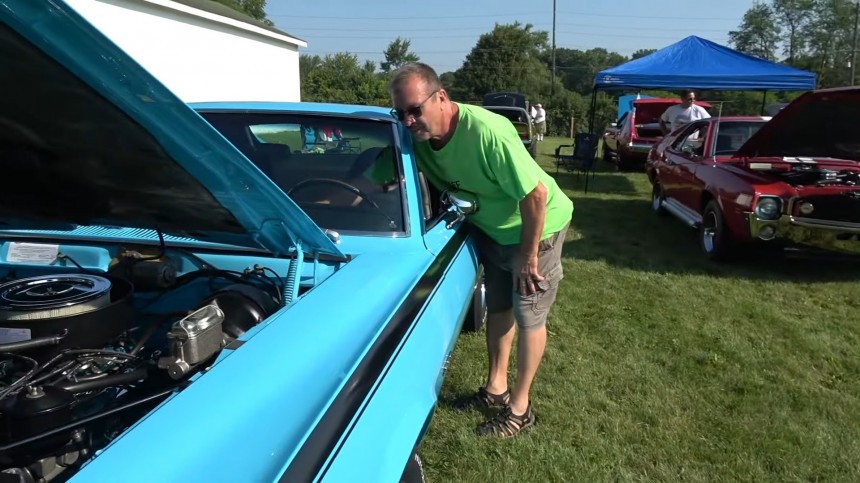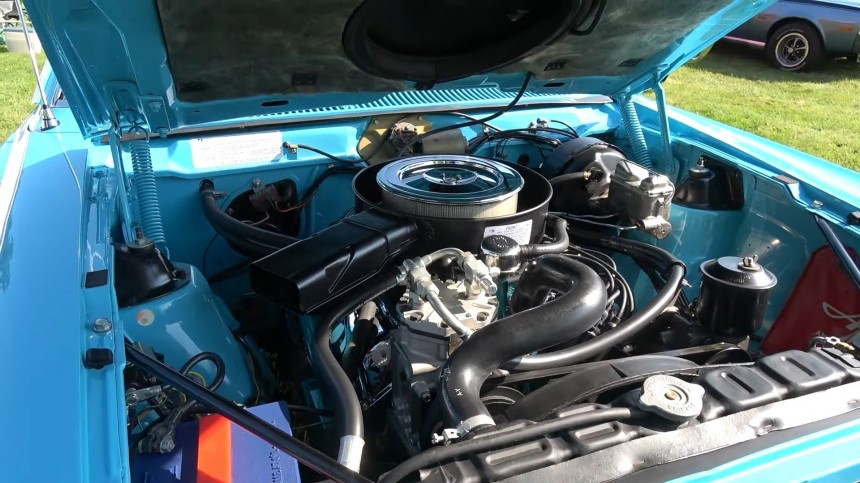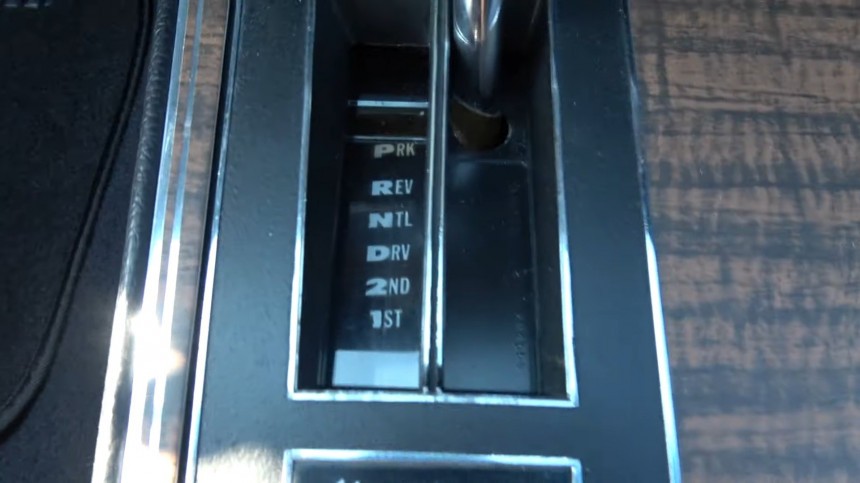In the most secluded corners of Planet Speed hide some of the most radical car worshipers – those with no tolerance for anything that doesn’t run on reciprocating pistons. They don’t use many words, instead preferring to express their feelings in cubic inches, pounds-feet, and smiles per gallon. Oh, and they wear wristwatches that only show quarter-mile times.
These people will stop at nothing to show their devotion to a muscle car, even if that means blowing its engine off and going through a new set of tires every other weekend. Or frying a tranny seven days into ownership. This is no metaphorical exercise in logic but a true story with a certain George Burcar from Macomb, Michigan, as its main character.
That happened in 1974, right after he bought his high school driver – an American Motors Corporation automobile. However, his choice wasn’t the Volkswagen-Beetle-rivaling AMC Gremlin but something less accommodating. This hint should give it away, as one other car in America offered limited one-row seating – the AMX.
Mr. Burcar didn’t settle for any AMX but went all in and got the Big Bad muscle sportscar, with 390 cubic inches (6.4 liters) of a V8 and an optional ‘Go Package.’ The car had the best of both worlds – two seats, just like the Corvette, and the affordability of a bare-bone muscle. The 1970 AMC AMX fit the bill and checked all the boxes, so George bought one and never let it go since.
Granted, he didn’t abuse it past the point of no return, and he always took great care of its machine, following a wise piece of advice from his father. Burcar Senior suggested his son buy spare parts for everything, and his words paid off with dividends. The AMX we’re looking at in the video has been a constant restoration project since 1974, in a way.
That is to say that George Burcar never let his car down and replaced whatever needed to be replaced as soon as it had to be fixed. That’s one reason why his AMC looks car-show-level good. That said, please note that Mr. Burcar also brake-torqued this AMX and snapped an engine mount. He isn’t one of those armchair gearheads who buy a car, keep it in a controlled environment, and gaze at it.
The 1970 AMC AMX is righteously regarded as the only real AMX – the other American sportscar ever made. Launched in 1968, the two-seater automobile aimed at young, low-income buyers with a knack for stoplight adrenaline. At a base of $3,297, it was vastly more attractive than anything else on the market. The car didn’t go up in price in 1969, and sales figures reflected it. In its inaugural year, the AMX moved 6,725 units. The following year, 8,293 sportscars with the Red-White-and-Blue badge left the factory.
Things took a mild turn upward in 1970 when the price increased slightly – the final-year model was now a $3,395 affair. But the AMX had undergone several profound transformations, with the standard 360 cubic-inch (5.9 liters) V8 producing 290 hp and 395 lb-ft (294 PS, 536 Nm). The optional plant was the biggest engine from AMC for that year, the ‘AMX 390’, which came onto the stage with the model’s introduction in 1968.
However, in 1970, the four-barrel bog-block spitted out 325 hp and 420 lb-ft (330 PS, 570 Nm), second only to the nefarious Rebel The Machine’s 340 hp and 430 lb-ft (345 PS, 583 Nm). Mated to either a four-speed manual or a heavy-duty three-speed auto (like the hero of this article), the 1970 AMC AMX was a serious performer on the strip.
Not so much in the sales race, since the model only managed to convince 4,116 customers to come up with the money for America’s other sportscar. The majority (2,533) of this almost invisible minority went for the optional powerhouse V8, the rumbling 390-CID signature V8. In a non-mainstream fashion, the standard transmission was the four-speed manual, with the automatic going in only 901 of the 390-powered AMXs.
That’s a rarity no matter how we look at it – but then again, any AMC automobile isn’t exactly commonplace. The Big Bad Blue example has been restored to a very high standard – with almost 50 years of same-owner custody, the car is family, not transportation. The Go Package optional performance group added several goodies to the cars. The most striking of them is the twin-scoop hood – and those blow holes aren’t just ornaments but functional air ducts that feed the four-barrel carburetor.
Despite being built on an inch shorter platform than the Corvette (wheelbase-wise), the AMX came with a trunk – not a very large one, as even the space-saving tire looks big in the cargo bay. It also had a safety windshield that crystallized on impact instead of shattering into lethal shards, and the Go Package added front discs on the power-assisted front brakes. The handling package, heavy-duty cooling, and twin-grip differential completed the performance upgrade.
Unfortunately, like in so many other instances, plain, sensible carmaking plans don’t turn out for the better, and the AMX was discontinued after just three model years. The name lived on with the Javelin-based versions, but adding a second row of seats nullified everything the original American Motors eXperimental ‘idea car’ from 1966 – the concept that served as the basis for the sportscar AMX – stood for.
That happened in 1974, right after he bought his high school driver – an American Motors Corporation automobile. However, his choice wasn’t the Volkswagen-Beetle-rivaling AMC Gremlin but something less accommodating. This hint should give it away, as one other car in America offered limited one-row seating – the AMX.
Mr. Burcar didn’t settle for any AMX but went all in and got the Big Bad muscle sportscar, with 390 cubic inches (6.4 liters) of a V8 and an optional ‘Go Package.’ The car had the best of both worlds – two seats, just like the Corvette, and the affordability of a bare-bone muscle. The 1970 AMC AMX fit the bill and checked all the boxes, so George bought one and never let it go since.
That is to say that George Burcar never let his car down and replaced whatever needed to be replaced as soon as it had to be fixed. That’s one reason why his AMC looks car-show-level good. That said, please note that Mr. Burcar also brake-torqued this AMX and snapped an engine mount. He isn’t one of those armchair gearheads who buy a car, keep it in a controlled environment, and gaze at it.
The 1970 AMC AMX is righteously regarded as the only real AMX – the other American sportscar ever made. Launched in 1968, the two-seater automobile aimed at young, low-income buyers with a knack for stoplight adrenaline. At a base of $3,297, it was vastly more attractive than anything else on the market. The car didn’t go up in price in 1969, and sales figures reflected it. In its inaugural year, the AMX moved 6,725 units. The following year, 8,293 sportscars with the Red-White-and-Blue badge left the factory.
However, in 1970, the four-barrel bog-block spitted out 325 hp and 420 lb-ft (330 PS, 570 Nm), second only to the nefarious Rebel The Machine’s 340 hp and 430 lb-ft (345 PS, 583 Nm). Mated to either a four-speed manual or a heavy-duty three-speed auto (like the hero of this article), the 1970 AMC AMX was a serious performer on the strip.
Not so much in the sales race, since the model only managed to convince 4,116 customers to come up with the money for America’s other sportscar. The majority (2,533) of this almost invisible minority went for the optional powerhouse V8, the rumbling 390-CID signature V8. In a non-mainstream fashion, the standard transmission was the four-speed manual, with the automatic going in only 901 of the 390-powered AMXs.
Despite being built on an inch shorter platform than the Corvette (wheelbase-wise), the AMX came with a trunk – not a very large one, as even the space-saving tire looks big in the cargo bay. It also had a safety windshield that crystallized on impact instead of shattering into lethal shards, and the Go Package added front discs on the power-assisted front brakes. The handling package, heavy-duty cooling, and twin-grip differential completed the performance upgrade.
Unfortunately, like in so many other instances, plain, sensible carmaking plans don’t turn out for the better, and the AMX was discontinued after just three model years. The name lived on with the Javelin-based versions, but adding a second row of seats nullified everything the original American Motors eXperimental ‘idea car’ from 1966 – the concept that served as the basis for the sportscar AMX – stood for.
